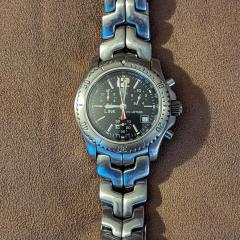Moebius 9504 synthetic grease: small white particles
-
Recently Browsing
- No registered users viewing this page.
-
Topics
-
Posts
-
By watchweasol · Posted
Hi as Richard said cousinS is the place to start. -
I thought about some easily dissolvable thick oil or grease on the pallet fork that once assembled could be run through cleaning fluid to remove the temp grease used to hold the assembly together. Just a thought but haven't tried it yet.





Recommended Posts